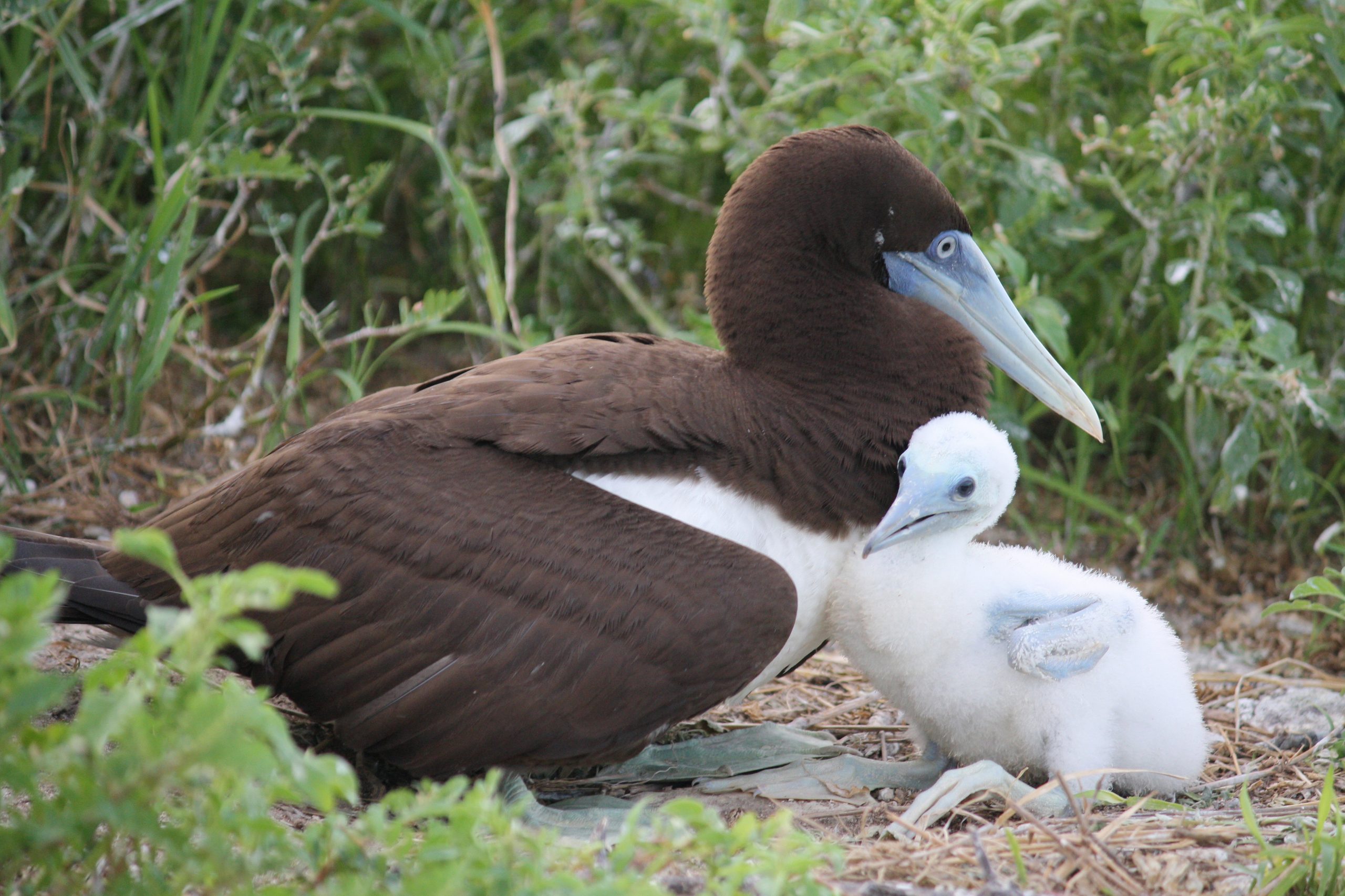Brown Booby
Sula leucogaster
Conservation Status
Listed marine and migratory (CAMBA, JAMBA, ROKAMBA)
Species and status overview
The Brown Booby uses marine environments, and roosts on islands and forages at sea. The Brown Booby will also roost on artificial structures including navigation beacons, buoys, and shipwrecks. The species nests on the ground in a variety of sites including rugged rocky terrain on larger islands. Their diet is comprised of flying fish, squid, mullet and anchovy, caught by plunge diving often in association with other seabirds, dolphins, and whales. Brown Boobies breed seasonally with a peak summer nesting period, but elsewhere the species breeds throughout the year.
Locations where the Brown Booby has been recorded in the area include
- Bakers Creek
- Brampton Island
- Bucasia Beach
- Cape Hillsborough
- Hook Island
- Lindeman Island
- Newry Island
- Percy Islands
- Sarina Beach
Description
The Brown Booby is deep brown in colour and has a strong white breast and upper wing. The iris may be cream, yellow, grey, or deep brown and the bill is creamy-grey. Legs and feet are yellow. The average length of the Brown Booby is 65–75 cm with a wingspan of 130–150 cm. Birds weigh from 900–1500 g.
There is little difference between sexes, though females are slightly larger, and males have a deep blue base to their bill.
The brown booby is a superb diver. With a bullet shaped body, forward facing eyes, and a streamlined head and bill, it is adapted to plunging from heights of up to 30 metres into the ocean in search of prey.
Conservation concerns
The Brown Booby has historically been susceptible to predation by humans harvesting chicks and eggs. Increased human visitation in the area creates more food scraps and as a result increases predation by gulls, in addition to disturbing breeding sites and mortalities due to baited fishing hooks. As a deep plunging diver, the Brown Booby is at risk from oil pollution and marine debris.
Climate change, and associated changes in weather, ocean currents and sea levels may have a dramatic impact on this species. Because it nests on low islands, the nests and eggs can be inundated by high tides.
What can I do?
- Ensure you do not leave any litter or food when boating or visiting the islands
- Be aware of where Brown Boobies nest and do not disturb these areas
